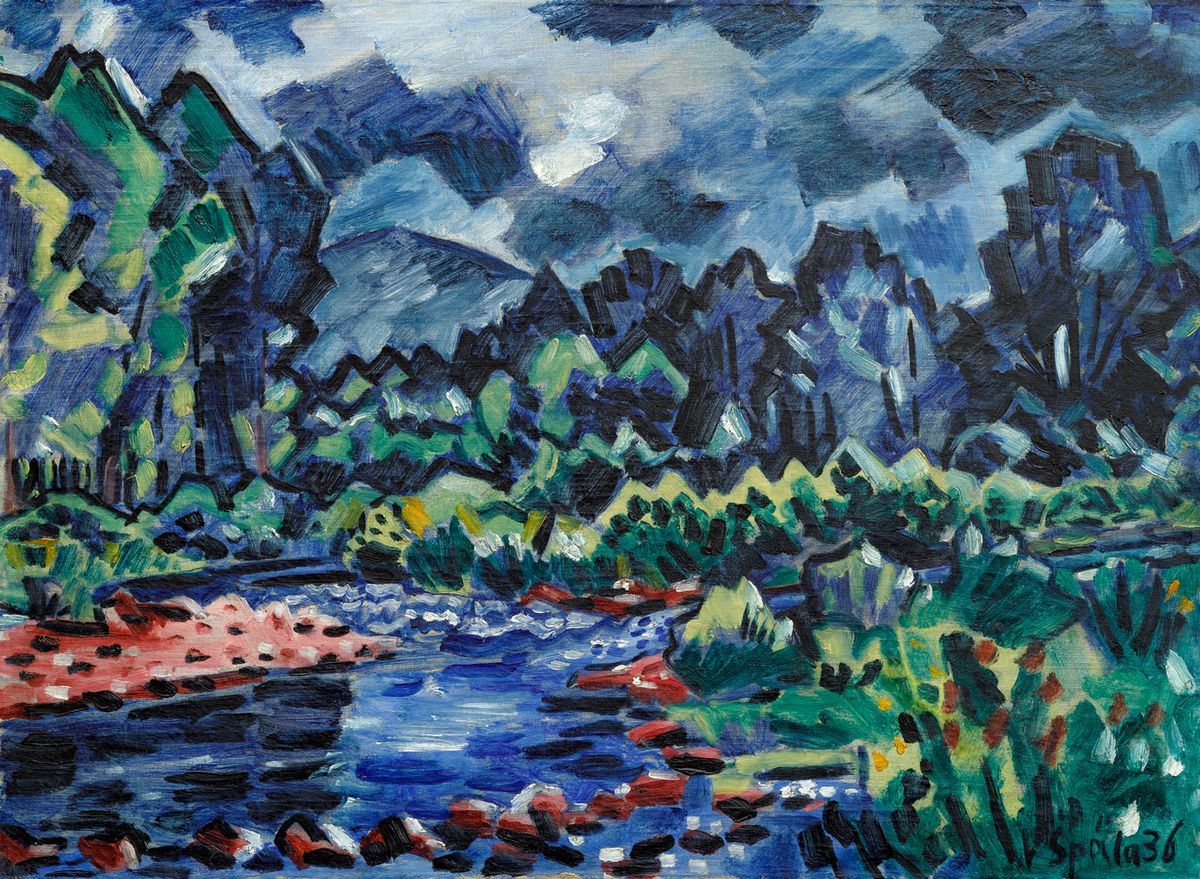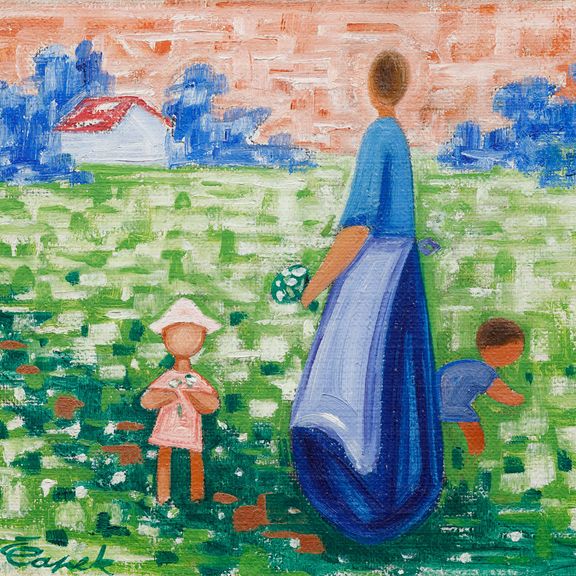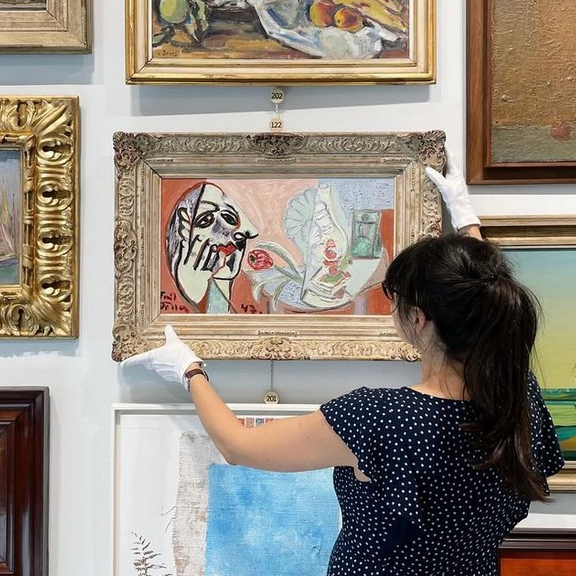
oil on canvas
1936
lower right
54 × 73 cm
framed
The presented dynamic and masterful work is an excellent example of Špála’s talent for capturing the landscape around the river, the environment of which attracted him throughout his life and became one of his main subject-matters. He began to devote himself more intensely to it as early as 1919 and as a result the South Bohemian rivers Sázava, Vltava, Berounka, and Otava were immortally depicted on his canvases. This stage of his work is nowadays known as his “blue period”. However, Špála devoted himself to landscape painting for much longer, up until 1938, and he often described it as a way of his own introspection: “I do not paint landscapes, but myself. I use the subject-matter to put myself on so that I can enjoy myself, develop my artistic sense, echoes of my emotional excitements... I like to paint the landscape before the storm, when the clouds come together and hold everything in a tight embrace, when the air is full of dynamic tension, which suits my inner mood and helps me express something that has been dormant in me since my early childhood.” In the 1930s, the artist’s hitherto mostly dark blue canvases started glowing with shades of yellow, green, and red colours. Another addition was a strong, masterfully executed black outline, sometimes changing into shadow areas, which added compositional stability to the paintings. The painting Morávka River is listed in the artist’s inventory under No. 953 with the description “The Morávka River, clouds scudding along, darker blue, similar to what Kandus has”. It comes from the mature period of Špála’s work, when he was an acclaimed painter, and as the contemporary theorists and art critics Josef Čapek, Jaromír Pečírka, and Josef Kodíček wrote in their articles, “he developed such self-confidence and composure and gained a solid place in Czech modern art.” This, of course, was not easy. During his academic years, Špála, with his opinions and artistic expression, went beyond the paintings of his professors V. Bukovac and F. Thiele, as well as his contemporaries, who eventually, due to disapproval from Emil Filla, did not invite him to join their newly formed group, Osma. However, it was his uniqueness and self-belief that later proved to be very valuable and brought him a leading place in the history of modern art. The painting comes from the family of a music professor, to whom it was donated directly by the artist, and represents an interesting example of the final period of Špála’s landscape painting. It has been restored. Assessed during consultations by PhDr J. Machalický and prof. J. Zemina. From the attached expertise by PhDr. K. Srp: “[…] In this painting, Špála achieved clear pantheistic unity of all depicted components, whose shapes smoothly intersects, one seamlessly follows the other, it is one compact whole world, captured by Špála’s dramatic brushwork, which is graded in colour and light so that both components are interconnected. Špála achieved a strong contrast of light and shadow in the painting, which thus becomes almost a relief. […]”







